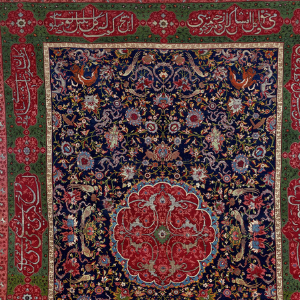Primer: Transcultural History
Overview
Broadly, transcultural histories include those historical contexts and processes brought about by circulation of people, objects, and knowledge through travel, trade, migration, or globalization. The transcultural approach belongs to a set of methods developed to study world history as processes and encounters that come in the wake of the “global turn” in humanistic disciplines over the course of the last quarter of twentieth century. The term “transcultural” indicates not a fixed prescriptive or descriptive term. Rather, it focuses on the moments of contact between cultures or individual persons. It is therefore a process-oriented approach to studying history.
Essay
The focus of transcultural histories is on mobility, translation, and decentering. The term was first coined in the 1940s as transcultarción by Cuban anthropologist Fernando Ortiz. Ortiz began to use this term to describe the cultural interactions between Cuba and North America. The interactions between these cultures at the time were cloaked under the idea of “acculturation” which pre-supposes assimilation and adaptation usually in the receiving culture, rather than allow for the possibility of cultural cross-pollinations and the formulation of new cultures or cultural elements. The underlying objective of Ortiz’s argument was the need to decentralize attention from the bigger or better-known culture (often referred to as the “metropole”) to smaller, marginalized cultures that come into contact.
In the 1980s, as more scholars studying regions and issues outside the Euro-American intellectual sphere gained prominence in western academia, more attention on non-western cultures and previously colonized regions began to provide new ways of looking at the field of history. This is most exemplified by the rise of the field of postcolonial studies. Postcolonial studies emphasized moving away from a Eurocentric perspective to look at history as multi-modal and inclusive of marginalized histories and regions. Within this context of change, it also became increasingly clear that it was a mistake to think of cultures as closed systems. This brought Ortiz's term "transculturation" into prominence and many scholars adapted that concept, using the word "transcultural" to analyze cultural interactions, encounters, and points of translation between cultural groups. Since the beginning of the twenty-first century, many fields have adopted the transcultural approach to study diverse topics from gender studies, linguistics, and migration studies to anthropology, art history, and political theory. However, as a relatively new methodology, the transcultural approach within history and related fields is still in the process of being theorized and standardized. Within history, the transcultural approach encourages moving beyond studying history within the common frameworks of institution, nation, and other bounded categories of studies within the discipline.
One might ask how the transcultural approach is different from the transnational approach. The simple answer is that transnational history prefaces the historical inquiry with a nation-state model, thinking of regions in a more modern sense. Its applicability to pre-modern periods when boundaries were constantly changing and borders more porous and less defined has been called into question. The transcultural approach, instead, focuses not on the question of boundedness and transgressions, but rather, looks at these movements, circulations, and exchanges to study what transcends cultural boundaries and become common to different cultures or subcultures. For example, the teaching module essay on early modern Islamic carpets, shows how these carpets produced in the different regions of the Islamic World become part of widely differing cultures at once being recognized as a luxury utilitarian if somewhat elite goods but at the same time being imbued with symbolic meaning and used in a variety of ways across Islamic and European cultures.
Primary Sources
Bibliography
Herren-Oesch, Madeleine, Martin Rueesch, and Christiane Sibille. 2012. Transcultural History: Theories, Methods, Sources. Berlin: Springer.
Ortiz, Fernando, Bronislaw Malinowski, Fernando Coronil, and Harriet De Onís. 2003. Cuban Counterpoint: Tobacco and Sugar. Durham: Duke Univ. Press.
Welsch, Wolfgang. 2001. "Transculturality: The Changing Form of Cultures Today." Filozofski Vestnik. (22): 59-86.
Credits
Deepthi Murali studies intersensorial production and use of art objects that served as actors in colonial, political, and cultural processes in the eighteenth and nineteenth centuries in southwestern India. Her dissertation "Politics and Transculturality of the Arts of Kerala, India" examines the lives of historical objects from their inception as raw materials to their current roles as things within museum collections with contested or neglected histories. Her work explores issues of transculturality, intersensoriality, colonialism, and decolonization practices within museum-like spaces.
